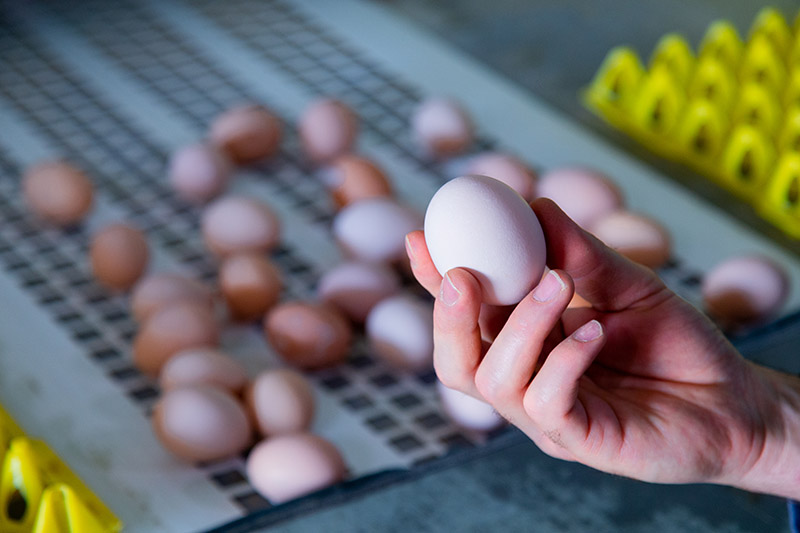How Eggs are Classed and Graded
In this article, we want to explain how Eggs are Classed and Graded. The grading of eggs is done with a series of tests. The eggs are examined for various qualities, such as size and weight. There are three grades of eggs, Grade A, Grade B, and Grade C, in Canada. The grades in the US differ slightly by name only, as Grade A, Grade AA, and Grade B. Grade A eggs are sold to consumers, but the other Grades are for commercial uses.
Technology plays a significant role in the production of eggs
To grade the eggs, they are first washed to ensure they are spotless and then sent to be candled. Candling, usually performed by hand, examines the egg’s contents. This is done by passing the eggs past a light which allows the shell to be viewed internally. The surface, the white, and the yolk conditions are checked for cracks and air pockets.
In modern egg operations, the eggs are checked for cracks using a sonic sound. Tiny probes tap the egg 16 times to accurately detect any blemishes in the shell. If a crack is found, a thud will indicate the egg is below standard and will be removed. A perfect egg will have the machine produce a high-pitched sound. The candling or scanning allows the technician to see the size of the air pocket, cracks in the shell, and the centering of the yolk. This is what will later divide the eggs into different grades.
Once it has been determined that the egg is worthy of carrying on, it will be graded and weighed. The weight is done by the carton, not the individual egg, and computer-controlled sensors weigh each egg over 60 times in less than one second. There is only a 3-ounce difference per one dozen eggs of a different size, so the accuracy of the weight of each carton is essential.
How Eggs are Classed and Graded
Grade A: The egg is found in perfect condition. The shell is not cracked or fully clean, and the yolk is round and centered in a firm white with a minimal air pocket. These eggs will be processed for shipping to retail stores for consumers to buy.
Grade B: This egg also has an uncracked shell but may have a rough texture. The white will be watery/thin, and the yolk somewhat flat. These eggs are saved for commercial uses such as selling to bakeries or processing into other foods like making mayonnaise or noodles.
Grade C: Eggs with this grade likely have a cracked shell, loose yolk, and very thin white. This will only be sold to commercial processors as an additive for other products.
Sometimes, eggs will get broken or punctured during cleaning and other processes. These will be added to the Grade C eggs for processing foods. The eggs are all broken by special machines at a breaking station, where they are then pasteurized. The eggs are pasteurized by heating the egg’s liquid to a very high temperature to kill harmful bacteria and microorganisms.
Once the pasteurization process has been completed, further processing of the egg is done and then packaged in liquid, frozen, or dried/powdered form for sale. Preservatives, flavorings, and food coloring may be added before selling to companies that use processed eggs to produce food or condiments, such as shampoos, pet food, and adhesives.
Technology has played a significant role in the production of eggs. All eggs can be used in various food areas, while the best eggs are provided directly to the consumer.




